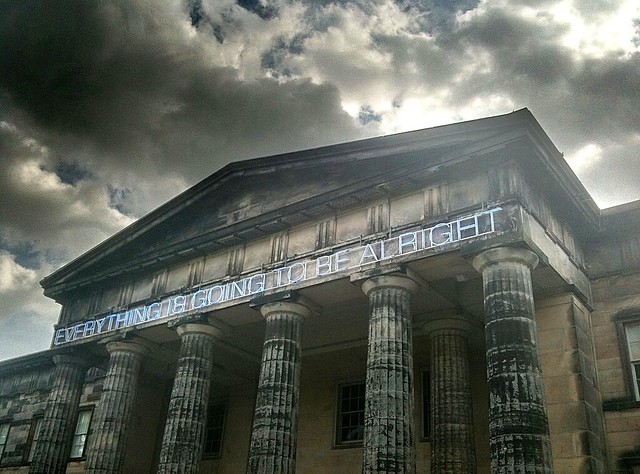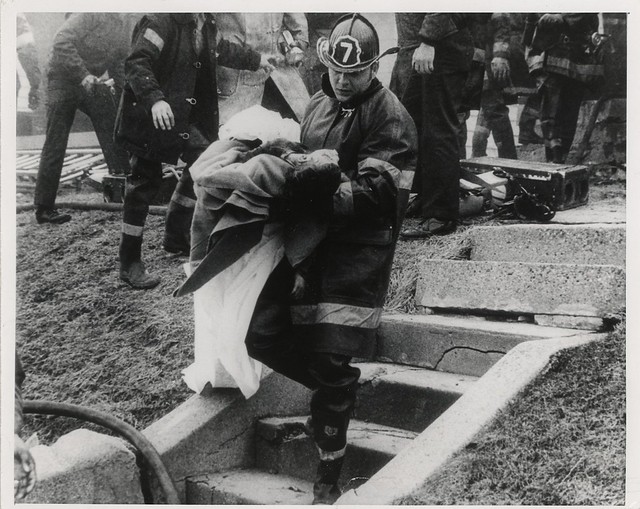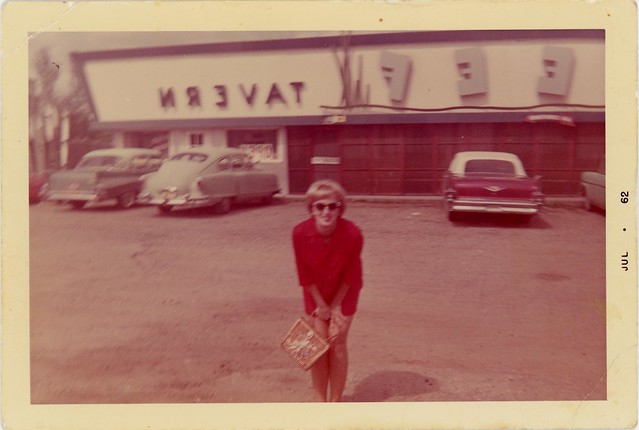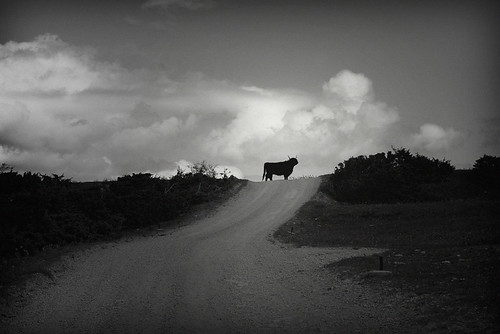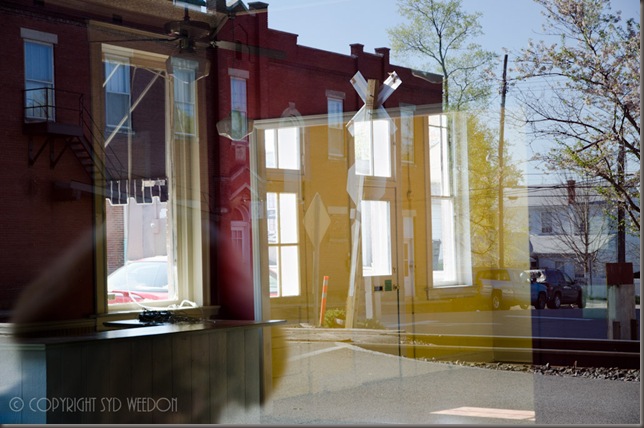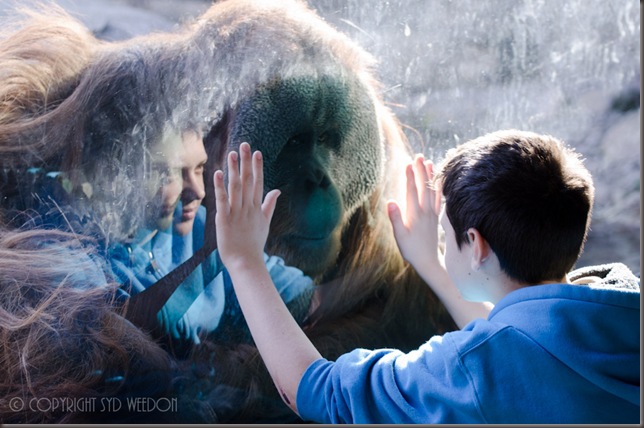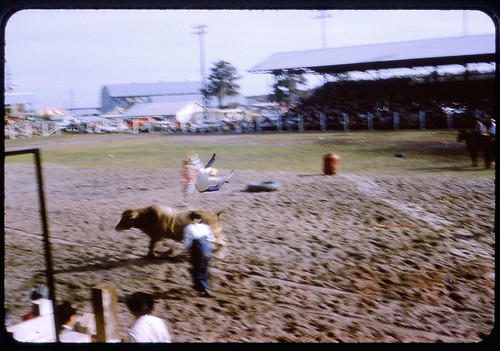
02 October 2011
03 September 2011
20 August 2011
Gertrude Käsebier In Europe, 1905 by Frances Benjamin Johnston [LOC]
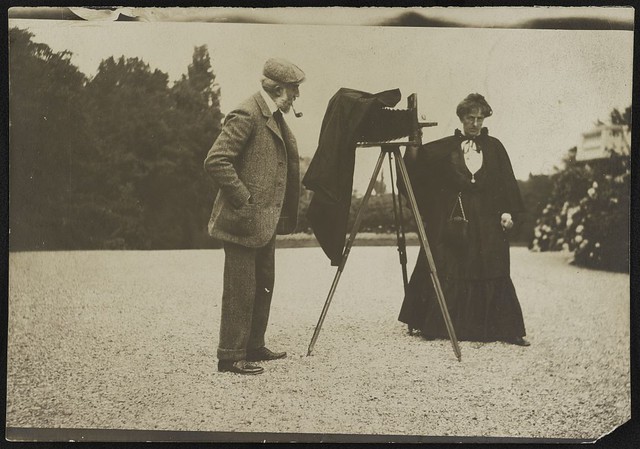
Gertrude Käsebier (LOC)
Johnston, Frances Benjamin,, 1864-1952,, photographer.
Gertrude Käsebier
[1905]
1 photographic print.
Notes:
Title from item.
Frances Benjamin Johnston Collection.
Photograph shows photographer Gertrude Käsebier, standing next to a tripod-mounted camera, an unidentified man is standing behind the camera.
Subjects:
Käsebier, Gertrude,--1852-1934--Journeys--Europe.
Cameras--1890-1930.
Photography--1890-1930.
Photographers--1890-1930.
Rights Info: No known restrictions on publication.
Repository: Library of Congress, Prints and Photographs Division, Washington, D.C. 20540 USA
Persistent URL: hdl.loc.gov/loc.pnp/ppmsca.31769
Call Number: LOT 11733-5b [item]

16 August 2011
23 July 2011
Amy Winehouse 1983-2011 Photograph By Andrew Kendall
RIP Amy Jade Winehouse 1983-2011 Photograph: Andrew Kendall
Nearly all of what you will hear about this immense talent is "drink and drugs" the "27 Club" "what a waste" etc. All this does is perpetuate myth and stigma.
While sudden fame can certainly accelerate matters, in thousands of ordinary cases each year,
untreated mental illness = death. It's been a very sad weekend indeed.

19 July 2011
18 July 2011
16 July 2011
Until The Watch Is Taken From The Wrist
I long ago abandoned the notion of a life without storms, or a world without dry and killing seasons. Life is too complicated, too constantly changing, to be anything but what it is. And I am, by nature, too mercurial to be anything but deeply wary of the grave unnaturalness involved in any attempt to exert too much control over essentially uncontrollable forces. There will always be propelling, disturbing elements, and they will be there until, as Lowell put it, the watch is taken from the wrist. It is, at the end of the day, the individual moments of restlessness, of bleakness, of strong persuasions and maddened enthusiasms, that inform one's life, change the nature and direction of one's work, and give final meaning and color to one's loves and friendships.An Unquiet Mind (1995)

14 July 2011
12 July 2011
07 July 2011
24 June 2011
Coming Out With Mental Illness
"Across the country, in small towns and cities, hundreds of people with severe mental illness live what appear to be normal, successful lives. They work in demanding jobs. They juggle responsibilities. They pay the bills, study, fall in love, raise families — all while knowing that their secret, if ever exposed, would mean almost certain ruin.Now, a small number of them are taking that chance, saying that it’s time. The nation’s mental health system is in a shambles, they say, criminalizing many patients and warehousing many others in nursing and group homes where they receive minimal therapy.Moreover, the enduring stigma of mental illness teaches people with a diagnosis to think of themselves as victims, snuffing out the one thing that can motivate them to find treatment — hope."
Tara Parker-Pope, NYT
See also: Kay Redfield Jamison

11 April 2011
Reflections in Time
Click on picture for a larger view
These are windows which let in light but cannot be opened, and doors through which I cannot walk. They are in my mind and lost in time, but they return to me now. My gaze pushes through them and I remember. There are some which I can’t quite see through because they are still in the future, and they are hidden to me.
A day comes that isn’t a day. It’s a thousand days – days passed and days yet to come. Some are clear, and some are hazy. I don’t really know why it happens. Situation and circumstance twist themselves around and come to a moment of clarity when the past, present and even hints of the future become visible at once. It doesn’t last. It’s purely temporary, but for those few hours or days, it is like standing on a ridge with everything ahead and behind in view. The moment is usually accompanied by a fear of trusting the scene unfolding in the mind.
Windows and doors full of light, memory and possibility, separated from me by time, a hundred people and places I’ve been surging across each other like the tide coming in – this is the picture. It is confusing on the surface, but tied together by the internal narrative of a human life. For a few moments, or maybe even an afternoon, the whole story hangs together. For a little while, there is an element of certainty and clear seeing.
It leaves as quickly as it comes. The sacred hologram of non-linear time collapses to a single thin thread – tomorrow morning, the next meal, the next job. The picture remains as a memory, its ambiguous special dimensions spilling across each other in ways that no longer makes sense. At least the memory remains.

07 April 2011
The Secret Sauce of a Great Photograph
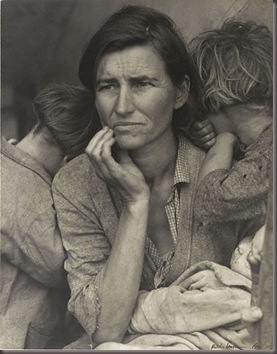 What makes a photograph great? Please notice that I didn’t say “good,” excellent” or any of those cheap superlatives like “stunning.” The question is what makes a great photograph? By “great photograph” I mean that handful of photographs that come to your mind in an instant when you think about the best that photography can be. These are the shots that find their way onto museum walls and are published in anthologies again and again because there is something about them that compels us to look at them, regardless of how many times we may have seen them before. Among those that come to my mind are Steve McCurry’s “Afghan Girl,” Eisenstaedt’s “Kiss,” "Migrant Mother" by Dorothea Lange, the Robert Kennedy assassination photo by Boris Yaro, and I could name many others. I’m listing older photographs only because these have been around long enough that most people have seen them. There are great photographs being made every day.
What makes a photograph great? Please notice that I didn’t say “good,” excellent” or any of those cheap superlatives like “stunning.” The question is what makes a great photograph? By “great photograph” I mean that handful of photographs that come to your mind in an instant when you think about the best that photography can be. These are the shots that find their way onto museum walls and are published in anthologies again and again because there is something about them that compels us to look at them, regardless of how many times we may have seen them before. Among those that come to my mind are Steve McCurry’s “Afghan Girl,” Eisenstaedt’s “Kiss,” "Migrant Mother" by Dorothea Lange, the Robert Kennedy assassination photo by Boris Yaro, and I could name many others. I’m listing older photographs only because these have been around long enough that most people have seen them. There are great photographs being made every day.
There are a few things that we can identify that don’t make a great photograph by themselves. Style, by itself, does not make a great photograph. Fashion photographers are great on style. Most of them develop elaborate and distinctive shooting and post-processing techniques that produce a unique style. Many of these are very pretty and interesting, but they are largely forgettable because the photograph is nothing more than yet another pretty girl rendered with an interesting post-processing method – nice, but so what? Technique is another element that does not produce a great photograph by itself. The great Ansel Adams used a large view camera and manually burned and dodged his prints. It’s a great technique with the potential to produce breathtaking photographs, but the greatness does not emerge from a particular technique or even technical excellence. Robert 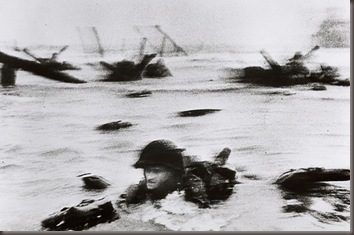 Capa’s immortal D-Day shots are technical disasters, and as I understand it, they required some Herculean darkroom manipulation to get a print, yet they are some of the most powerful images ever made. Beauty is another element that cannot by itself produce a great photograph. I have seen countless gorgeous photographs of flowers and landscapes, but very few of these rise to the level of truly memorable photography because, besides being pleasing to the eye and suitable for framing, there really isn’t much to them. They don’t do much to us when we look at them besides providing a moment’s sensory pleasure.
Capa’s immortal D-Day shots are technical disasters, and as I understand it, they required some Herculean darkroom manipulation to get a print, yet they are some of the most powerful images ever made. Beauty is another element that cannot by itself produce a great photograph. I have seen countless gorgeous photographs of flowers and landscapes, but very few of these rise to the level of truly memorable photography because, besides being pleasing to the eye and suitable for framing, there really isn’t much to them. They don’t do much to us when we look at them besides providing a moment’s sensory pleasure.
So what is the “secret sauce” that makes a photograph great? Whenever we speak in generalizations like this, there are sure to be notable exceptions, so don’t jump me because your favorite photograph escapes one of these descriptions. Here are some characteristics that I find common to most great photographs.
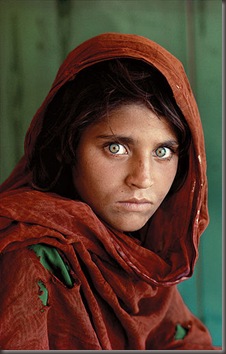 A great photograph is evocative.
A great photograph is evocative.
A great photograph will evoke a response from us, often visceral, usually emotional, and often intellectual. Edward Weston’s famous photograph of a dead pelican in a tidal pool is an interesting example. This photo evokes all sorts of responses, from “Yuck” to “What was he thinking?” to amazement that the fine eye of Weston had found a strange beauty in such an unpleasant scene. It immediately causes us to reflect on the transience of life and the meaning of its end. That’s a lot to accomplish for a photo of a dead bird floating in a puddle. The “Afghan Girl” has the evocative quality. There is something about her eyes that transfixes the viewer. They are frightened, feral, precociously attractive – this shot is disturbing to me at many levels.
A great photograph tells a story.
There is a narrative to most great photographs. With some it is obvious. With Eisenstaedt’s “Kiss” it is, “We won the war, and it’s over.” With the RFK assassination shot, it is, “This great man has been brutally taken from us.” With other photographs, the story is not so obvious or complete, but there is something about them that suggests something important is happening here, and our minds are nudged to try to parse out the story. In Ansel Adam’s 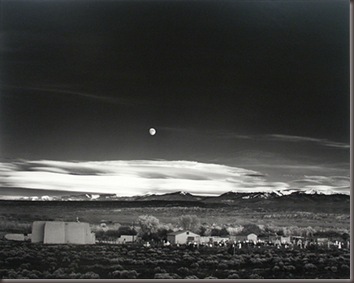 “Moonrise, Hernadez, New Mexico,” the story is in the town. This photograph would not be the same had it been just the moon rising over a cow pasture in the west somewhere. The town suggests people and lives which are struggling to survive in this barren place. I’ve been to Hernandez, so perhaps I’m prejudiced, but I know something about the difficult lives in those adobe homes. This photo brings those stories to my awareness. Or take, for example, "Migrant Mother" by Dorothea Lange. The photograph is correctly developed and printed. It has a nice tone curve. The composition is pretty standard for a portrait, except perhaps for the children who turn their faces away from the camera. From a technical point of view, there is nothing particularly noteworthy about the photograph. The story is everything in this photograph: a beautiful woman, her face lined and weathered by worry and exposure to the elements, holding her children close and looking away into the distance to see what new calamity will come down the road to torment her.
“Moonrise, Hernadez, New Mexico,” the story is in the town. This photograph would not be the same had it been just the moon rising over a cow pasture in the west somewhere. The town suggests people and lives which are struggling to survive in this barren place. I’ve been to Hernandez, so perhaps I’m prejudiced, but I know something about the difficult lives in those adobe homes. This photo brings those stories to my awareness. Or take, for example, "Migrant Mother" by Dorothea Lange. The photograph is correctly developed and printed. It has a nice tone curve. The composition is pretty standard for a portrait, except perhaps for the children who turn their faces away from the camera. From a technical point of view, there is nothing particularly noteworthy about the photograph. The story is everything in this photograph: a beautiful woman, her face lined and weathered by worry and exposure to the elements, holding her children close and looking away into the distance to see what new calamity will come down the road to torment her.
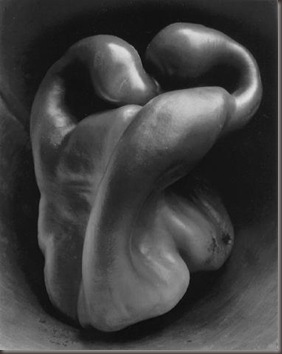 A great photograph is visually compelling.
A great photograph is visually compelling.
“Visually compelling” is not the same as “pretty” or “technically perfect.” “Compelling” implies that the photograph is so strong visually that it demands our attention and causes us to relate to it by its sheer inherent power. The compelling character of a photo may come from technical excellence and beautiful presentation, such as an Ansel Adams or Edward Weston print, or it may spring from that alchemy of photographer’s eye, subject, and the narrative suggested by the photo. Weston did a close up of a bell pepper that is expertly shot and rendered. He printed it very dark so the pepper looks like a couple of alien life forms locked in an embrace. It’s a fascinating photo. A very different photo which is highly compelling visually is Eisenstaedt’s photo of Joseph Goebbels glaring up at the camera. There is nothing beautiful about the photograph. The glare and the man represented ooze with evil and hatred, the baleful stare made even more starkly dramatic when you know that Eisenstaedt was Jewish. This photograph gets its visual power from the subject and the unconventional composition. Finally, for many, Steve McCurry’s “Afghan Girl” remains one of the most visually compelling photographs of the Twentieth Century. In it, we find technical excellence, inherent beauty and story.
Perhaps Weston, Cartier-Bresson and Eisenstaedt could produce three great photographs before breakfast, but for most of us, it isn’t that way. In my own practical shooting, I’m usually happy if I can consistently get “technically correct” and “interesting.” For most of us, if we produce a handful of photographs that could be called “great” in an entire lifetime, it would be cause for rejoicing. So, don’t beat yourself up if the next few frames out of your camera fail to win a Pulitzer Prize. I think we can improve our odds of producing a great photograph if we ask of it these three questions: Is it evocative? Does it tell a story? Is it visually compelling?

20 February 2011
Close Encounters
Click on picture for larger view
A kid has a mind meld with an orangutan at the Louisville Zoo. And yes, there is some real sadness in this photo. The great ape just sat at the glass looking into the viewing area in the zoo. Marian said, “He’s at the zoo. He’s watching us.” His eyes were full of intelligence. The scene raised questions in my mind about why one species is behind the glass and another is not. I particularly like the way the boy’s reflection works in the photograph. To me it suggests that we do a better job of seeing ourselves in other species, especially the more intelligent ones like the orangutan.
Photo was done with the Nikon D7000 using the Nikkor 70-300mm VR lens.


